Dalkeith, Midlothian, Scotland, UK 作者: 来源: 发布时间:2021-07-29
I. Population and Area
Continent: Europe
Country: The U.K
State/Province: Scotland
City/Town: Dalkeith, Midlothian
Total Area: 2.5191 (sq mi)
Population in 2011: 12.34 (thousand)
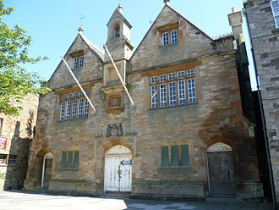
II. Natural Geography (environment and resources)
Geography
The traditional county has a roughly trapezoidal shape; it consists of a fairly flat area along the Firth of Forth, which is heavily urbanised and dominated by the Edinburgh conurbation. Off the coast lie the small islands of Inchmickery and Cramond Island. The land gradually rises to the south, with the Pentland Hills in the south-west, Moorfoot Hills in the centre-south and the Lammermuir Hills in the far south-east. Blackhope Scar on the border with Peeblesshire is the highest point in the county at 651 m (2,136 ft). The county contains no lochs of any size, though there are many reservoirs, most notably Gladhouse Reservoir, Rosebery Reservoir, Edgelaw Reservoir, Loganlea Reservoir, Glencorse Reservoir, Threipmuir Reservoir, Harlaw Reservoir, Harperrig Reservoir, Crosswood Reservoir, Morton Reservoir and Cobbinshaw Reservoir.
Transport
Until 2008, Dalkeith was on the A68, one of the main routes south from Edinburgh to Jedburgh and across the border to Darlington. A bypass to take traffic away from the town centre was completed in September 2008; this then took the A68 number, and the old route of the A68 is now the A6106.
Other main roads serving Dalkeith are:
1.A6094 — leads SW towards Bonnyrigg and Peebles, and NE towards Musselburgh
2.A768 — leads west from Eskbank to Lasswade and Loanhead
3.B6373 — a road wholly within Dalkeith, leaving and rejoining the A6106
4.B6414 – leaves the A6094 on the NE edge of Dalkeith (at Woodburn) and leads NE to Tranent
5.B6392 – runs north–south through Eskbank, and used to be the route of the A7 which leads from Edinburgh to Galashiels and Hawick
6.B703 – leads south from Eskbank, through Newbattle, to Newtongrange
7.B6482 – leaves the A6106 on the SE edge of Dalkeith (at Woodburn) and leads into Easthouses and Mayfield.
The re-building of the northern section of the Waverley Railway Line re-connected Dalkeith to the national rail network after a gap of more than 40 years, with a station at Eskbank on the western edge of Dalkeith. Construction commenced in late 2012, and the line re-opened to passenger services on 6 September 2015.
Bus services in Dalkeith are mostly run by Lothian Buses; East Coast Buses and Borders Buses also serve the town.
For walkers, the Penicuik–Dalkeith Walkway passes close by.
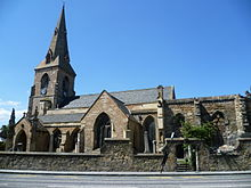
III.Economy
The average Midlothian Council salary ranges from approximately £17,285 per year for Gardener to £56,542 per year for School Principal.
Salary information comes from 394 data points collected directly from employees, users, and past and present job advertisements on Indeed in the past 36 months.
Please note that all salary figures are approximations based upon third party submissions to Indeed. These figures are given to the Indeed users for the purpose of generalised comparison only. Minimum wage may differ by jurisdiction and you should consult the employer for actual salary figures.




An ambitious new 5-year economic strategy is being developed by Midlothian Council in a bid to drive innovation, investment and inclusive growth in the area.
The strategy aims to recognise the region’s key economic opportunities and challenges, identifying the assets and skills needed to boost the local economy. It is expected to be published by the end of this year.
To help develop the strategy, a series of interactive workshop sessions has been scheduled to allow partner organisations, businesses, other key stakeholders and local residents to have their say. , explained the thinking behind this approach.
“We want to work with our business community and other organisations, interested groups and individuals, to help identify priorities for the area and to determine how we can best achieve these. Our aim is to encourage investment and business growth, create new jobs and training opportunities.
“Each of the six workshops to be held during August and September will focus on specific themes which are seen as key to Midlothian’s economy. Although we are inviting representatives from key organisations and businesses to attend, I would encourage anyone who has an interest to book a place.”
Councillor Russell Imrie, Midlothian Council’s Cabinet Member for Communities
Reference Website:
https://www.indeed.co.uk/cmp/Midlothian-Council/salaries?location=GB%2FSCT%2FMLN%2FDalkeith
https://midlothiansciencezone.com/news-events/msz-news/new-strategy-to-boost-midlothian-s-economy/
IV. Industrial Characterisitics
Major industries:
Midlothian emerged as a county in the Middle Ages under larger boundaries than the modern council area, including Edinburgh itself – and also known as Edinburghshire until 1921. It bordered West Lothian to the west, Lanarkshire, Peeblesshire and Selkirkshire to the south, and East Lothian, Berwickshire and Roxburghshire to the east. Traditional industries included mining, agriculture and fishing – although the modern council area is now landlocked.
Under local government reforms in 1975, Midlothian became a district council within the Lothian region and in 1996 the current unitary council area was created. It contains the towns of Dalkeith, Bonnyrigg and Penicuik, as well as a portion of the Pentland Hills Regional Park, Rosslyn Chapel and Dalkeith Palace.
Major projects and related introductions:
£3.5m revamp for Dalkeith Country Park approved
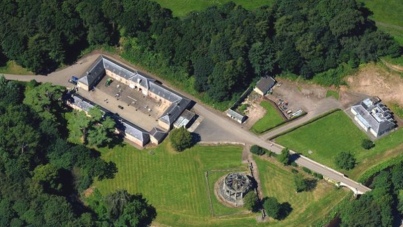
Plans for a multi-million pound redevelopment of Dalkeith Country Park in Midlothian have been approved. The £3.5m project at the 1000-acre country park will take place over two years, creating about 35 jobs. The first phase of redevelopment of the park has gone out to tender with a main contractor expected to be officially appointed by early September. The park is owned by the Duke of Buccleuch. The plans were approved by Midlothian Council. Region growth. The works involve refurbishment and development of the historic Stableyard, the surrounding listed orangery and amphitheatre and a new adventure playground. The buildings will have a cafe, farm shop and bakery and shops. Ian Herbert, visitor services manager for Dalkeith Country Park, said: "We are thrilled that our plans to revamp the park have been given the seal of approval. "As well as creating jobs, this significant investment will play an important part in facilitating economic development and growth in the region.
"Since the planning application was submitted in February, we have been canvassing views via an online survey and are continuing to liaise with key stakeholders and partners including Scottish Natural Heritage and Historic Scotland.
Reference Website:
https://www.bbc.com/news/uk-scotland-edinburgh-east-fife-28404832
V. Attractions
1. Scald Law:
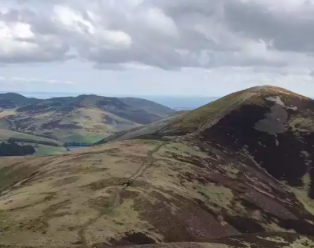
Hiking in the Pentland Hills to the south of Edinburgh is always a fairly marvellous experience but summiting Scald Law, the highest point, is the icing on the cake. Trails crisscross the hills and you can make your walk as short or as long as you like, depending on your mood, energy levels and the weather. With a summit trig point at 1,900 feet (579 m), clear days provide astounding views as well. You’ll find a visitor centre, toilets and parking just off the A702 to the north east and this is a popular place to start, with plenty of paths weaving into the hills. Approaching from this angle gives you the opportunity to walk over several other hills before reaching the summit itself.
2. Allemuir Hill:
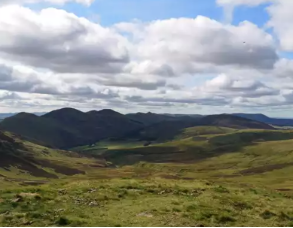
Rising much, much higher than the castle’s fortifications and around twice the height of the immensely popular viewpoint of Arthur’s Seat, Allermuir Hill is the place to be for a grandstand Edinburgh panorama. Hikes to Allermuir Hill take you above Scotland’s capital to the finest northern outpost of the glorious Pentland Hills.As its slopes dip their toes into Edinburgh’s suburbs, there are many starting points for walking routes to Allermuir Hill. The ascent is gradual from all sides on gentle, green flanks, with the steepest ground just below the summit.It is not just the stunning panorama of Edinburgh and the Firth of Forth that make the climb worthwhile. There’s a magnificent view of the main Scald Law ridge, especially in winter when the slopes are frostbitten and Carnethy Hill looks its most shapely.
3. Green Cleugh (valley):
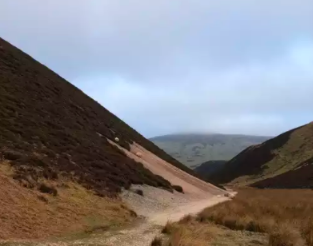
Green Cleugh is a valley in the Pentlands, a range of hills to the South-West of Edinburgh. They stretch for about 20 miles (32 kilometers) with twelve peaks, mostly over 1640 feet (500m). Green Cleugh is a steep sided valley, between the peaks of Black Hill and Hare Hill. Lovely way to join together a loop in the Pentlands. Smooth tarmac at either end, with some lovely flowing track in the middle, some loose rocky parts, some grass, 3 stepping stones, 2 gates and a couple of bridges! Pretty awesome valley!
Reference Website:
https://www.komoot.com/guide/365463/attractions-in-midlothian
VI. History
One of the earliest historical references to Dalkeith is found in the Chronicles of Jean Froissart who stayed at Dalkeith Castle for fifteen days. He writes of the Battle of Otterburn and the death of James Douglas, 2nd Earl of Douglas:
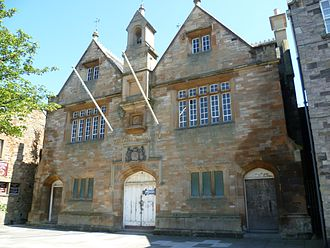
"I, author of this book, in my youth had ridden nigh over all the realm of Scotland, and I was then fifteen days in the house of earl William Douglas, father to the same earl James, of whom I spake of now, in a castle of five leagues from Edinburgh which is called in the country Dalkeith. The same time I saw there this earl James, a fair young child, and a sister of his called the lady Blanche."
In 1650, Oliver Cromwell's army came to Dalkeith. His officer General George Monck, was Commander in Scotland, and the government of the country was based out of Dalkeith castle.
In the 17th century, Dalkeith had one of Scotland's largest markets in its exceptionally broad High Street.
In 1831, Dalkeith was linked to Edinburgh by a railway line that transported coal, minerals, and agricultural produce. Two decades later, in 1853, a Corn Exchange, at the time the largest indoor grain market in Scotland, was built.
In 1879, Dalkeith was where William Ewart Gladstone started his campaign for British Prime Mini
VII. Culture
Dalkeith is a town in Midlothian, Scotland, on the River Esk. It was granted a burgh of barony in 1401 and a burgh of regality in 1540. The settlement of Dalkeith grew southwestwards from its 12th-century castle (now Dalkeith Palace). Dalkeith has a population of 12,342 people according to the 2011 census.
The town is divided into four distinct areas: Dalkeith proper with its town centre and historic core; Eskbank (considered to be the well-heeled neighbourhood of Dalkeith with many large Victorian and newer houses) to its west; Woodburn (primarily a working class council estate with pockets of new housing developments) to its east; and Newbattle (a semi-rural village with its abbey) to the south.
Dalkeith is the main administrative centre for Midlothian. It is twinned with Jarnac, France. In 2004, Midlothian Council re-paved Jarnac Court in honour of Dalkeith and Jarnac's long standing link.
On the north-eastern edge of Dalkeith at Woodburn is the Dalkeith Campus (completed 2003) – housing both Dalkeith High School and St David's Roman Catholic High School plus community leisure facilities.
VIII. Other information
Football
The town is home to Dalkeith Thistle F.C., based at King's Park. The club was formed in 1892 and now plays in the East of Scotland Football League, having spent most of its history in the Scottish Junior Football Association.
The established club is affiliated to Dalkeith Thistle Community Football Club, based at Cowden Park, Woodburn; The club is 'SFA Quality Mark' accredited and run by volunteers.
Rugby
Dalkeith RFC play in the Scottish Rugby Union East Leagues. The club was the first in Midlothian to open full membership to women and the first in the county to run a women's side. Notable former players include Sir David Murray, whose car crash on the way back from a match in North Berwick ended his rugby career and led to him focusing on his business empire. Adam Robson, who went on to become President of the Scottish Rugby Union, also played for the club.
Notable people
Robert Aitken (1734–1802), Bible publisher
Sir John Anderson (later 1st Viscount Waverley) (1882–1958), Home Secretary 1939–1940, Chancellor of the Exchequer 1943–1945
Edmund Thornton Crawford (1806–1885), artist
Henry Dundas, 1st Viscount Melville (1742–1811), politician
Fish (born Derek Dick) (b. 1958), singer with Marillion
Darren Fletcher (b. 1984), footballer with Manchester United, West Bromwich Albion and Stoke City
John Kay (1742–1826), artist
Robert Ker (1824-1879), First Auditor General of the Province of British Columbia
Robert Macpherson (1814–1872), photographer
David Mushet (1772–1847), pioneer of iron production
Ziggy kindlen 2015
Bob Pringle (1851–1902), professional golfer
Bobby Smith (1953–2010), footballer with Hibernian and Leicester City
Robert Smith (1722–1777), American architect
James Stagg (1900–1975), D-Day meteorologist
Peter Guthrie Tait (1831–1901), mathematical physicist
IX. Contact information
Mayor/Officer: Richard Reno
Tel: (972) 775-7101
Mail: contactcentre@midlothian.gov.uk
Reference Website:
https://www.midlothian.gov.uk/
https://www.midlothian.tx.us/57/Mayor
